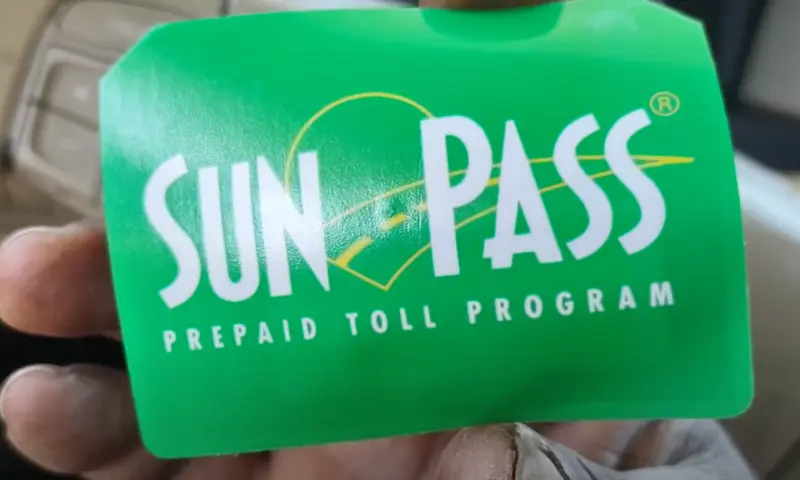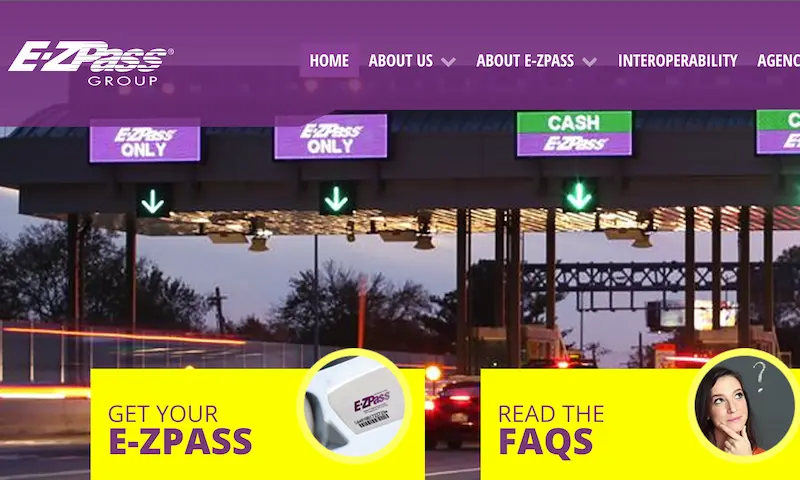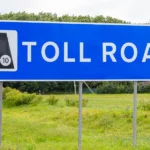Curious about who controls America’s first superhighway? If you’ve ever driven along the Pennsylvania Turnpike’s 565+ miles and wondered who’s in charge of this massive infrastructure project, you’re not alone. The Pennsylvania Turnpike has a fascinating ownership structure with a complex history and financial situation that impacts every driver who pays a toll.
The Pennsylvania Turnpike Commission: Official Owner Since 1937
The Pennsylvania Turnpike is owned and operated by the Pennsylvania Turnpike Commission (PTC), a state agency established in 1937. While many assume the turnpike is directly owned by the state government or managed by PennDOT, it’s actually controlled by this independent commission.
Legal Foundation and Authority
The PTC was created through Act 211 of 1937, signed into law by Governor George Earle on May 21, 1937. This legislation established the commission as “an instrumentality of the Commonwealth,” giving it the power to:
- Construct new turnpike sections
- Issue bonds to finance operations
- Collect tolls and generate revenue
- Maintain the entire turnpike system
What makes the PTC unique is that it functions as a government entity while maintaining significant independence. It’s the only transportation agency in Pennsylvania that operates separately from PennDOT, though they coordinate on design standards and procedures.
The Commission’s Leadership Structure
The PTC operates under a five-member board with a distinctive governance model:
- Four commissioners appointed by the Governor and confirmed by the Pennsylvania Senate
- One ex-officio member: the Pennsylvania Secretary of Transportation
The current leadership includes Chair Michael Carroll (who also serves as PennDOT Secretary), Vice Chair Pasquale T. Deon Sr., Secretary-Treasurer Dr. Keith Leaphart, Commissioner Sean Logan, and Commissioner Douglas Farnham, who was appointed in 2024.
Day-to-day operations are overseen by CEO Mark Compton, who has led the commission since 2013.
How the Turnpike Nearly Became Privately Owned
In 2008, Pennsylvania came remarkably close to transferring control of the turnpike to private hands in what would have been the largest public-private partnership in American history.
The $12.8 Billion Privatization Proposal
Governor Ed Rendell announced that Pennsylvania had accepted a binding $12.8 billion bid from Pennsylvania Transportation Partners, a consortium led by:
- Spanish toll road operator Abertis Infraestructuras
- Citigroup’s infrastructure division
The deal would have granted a 75-year lease of the entire turnpike system to these private entities. They would’ve gained the right to operate the toll road and collect revenues, with the ability to increase tolls by 25% initially and then by either 2.5% annually or the inflation rate (whichever was greater).
Why the Deal Collapsed
The privatization effort ultimately failed in September 2008 when the bidding consortium withdrew its offer. Several factors contributed to this outcome:
- Legislative Inaction: The Pennsylvania General Assembly never brought the proposal to a vote despite Governor Rendell’s advocacy
- Financial Crisis Timing: The 2008 economic meltdown and credit market tightening made the deal less attractive
- Public Opposition: Many stakeholders and citizens expressed concerns about foreign control and potential toll increases
- Planning Issues: The Pew Center on the States found that policymakers hadn’t resolved key differences before seeking bids
This failed attempt represents one of the most significant “what-if” moments in the turnpike’s history. Had it succeeded, drivers today would be paying tolls to a private company rather than a state commission.
The Turnpike’s Financial Structure and Challenges
The PTC operates as a self-sustaining entity with a complex financial situation driven by legislative mandates and debt obligations.
Act 44 and the Commission’s Financial Burden
The turnpike’s current financial challenges stem primarily from Act 44 of 2007, which fundamentally altered the commission’s mandate. This legislation required the PTC to make substantial annual payments to PennDOT for statewide transportation needs.
Initially, the plan assumed the turnpike would begin tolling Interstate 80 to generate additional revenue. However, when the Federal Highway Administration rejected the I-80 tolling proposal in 2008, the commission was still obligated to make the required payments, forcing it to borrow heavily.
The Financial Impact in Numbers
The financial burden on the turnpike has been substantial:
- From 2007 to 2022, the commission paid $7.9 billion to PennDOT
- Annual payments were $450 million until fiscal year 2022
- Starting in 2022, the payment dropped to $50 million annually (continuing through 2057)
- The PTC has accumulated more than $15 billion in debt—exceeding the debt of the entire Pennsylvania state government
According to Auditor General Timothy DeFoor’s 2022 audit, this represents “an unsustainable situation” that has forced the commission to raise tolls every year since 2007.
The debt burden is expected to peak around $1.2 billion in 2037 before gradually declining. To manage this debt, the turnpike has implemented annual toll increases that will continue through at least 2050, with rates decreasing from 5% annually to 3% by 2028.
Current Operations and Financial Management
Despite its financial challenges, the turnpike remains a well-managed operation with strong credit ratings and ongoing modernization efforts.
Revenue Sources and Traffic Volume
The turnpike generates approximately 98% of its revenue from toll collections, with the remainder coming from service plaza leases, property rentals, and other sources. In fiscal year 2024, the system handled more than 193 million vehicles across its network.
This steady traffic flow provides the reliable revenue stream needed to service the commission’s substantial debt and fund ongoing operations.
Financial Stability and Credit Ratings
Despite its significant debt burden, the commission has maintained strong credit ratings. As of 2024, the turnpike holds “AA” ratings from all four major rating agencies (Moody’s, S&P, Fitch, and Kroll), representing a return to pre-Act 44 credit levels.
These ratings reflect confidence in the commission’s:
- Steady traffic volume and revenue
- Sound operational management
- Ability to meet financial obligations
Modernization and Future Plans
The commission continues to invest in system improvements, including the transition to Open Road Tolling (ORT) launched in January 2025 for the eastern portion of the system, with full implementation planned for 2027.
This technology allows vehicles to travel at highway speeds while tolls are collected electronically via overhead gantries, eliminating the need for traditional toll booths and reducing congestion.
The Turnpike’s Legal Status and Future
While the turnpike operates as a state agency, its legal structure includes some interesting provisions regarding its long-term future.
The “Dissolution Provision” That Likely Won’t Happen
Pennsylvania law contains an interesting provision for the eventual dissolution of the turnpike commission. PA Act 229 of 1953 states that “when all bonds, notes or other obligations and the interest thereon have been paid,” the turnpike system “shall become a part of the system of State Highways and shall be maintained by the Department of Highways free of tolls; and thereupon, the Commission shall be dissolved.”
In theory, this means the turnpike could eventually become a toll-free highway maintained by PennDOT. However, given the commission’s current debt levels and obligations through 2057, this scenario appears highly unlikely in the foreseeable future.
Independence and State Relationship
The PTC maintains considerable autonomy in its operations despite being a state agency. The commission:
- Sets its own toll rates without oversight from other state agencies
- Issues its own bonds
- Manages operations independently
- Receives no state tax funding
This structure allows it to function similarly to a business entity while remaining under state ownership and serving public transportation needs.
What Makes the Turnpike’s Ownership Model Unique
The Pennsylvania Turnpike’s ownership structure stands out among American transportation systems for several reasons:
Self-Funding Public Agency
Unlike many transportation departments that rely on tax dollars, the turnpike operates entirely on toll revenue and other self-generated funds. This makes it financially independent but also responsible for generating all the money needed for operations, maintenance, and debt service.
Dual Mission
The PTC has been tasked with two sometimes competing missions:
- Maintaining and improving the turnpike system
- Providing substantial funding for other transportation needs across Pennsylvania
This dual responsibility has created financial strain but also demonstrates how infrastructure can potentially support broader transportation networks.
Governance Balance
The commission operates with a unique balance of political oversight (through governor-appointed commissioners) and operational independence (through its self-funding model and independent authority). This creates a hybrid entity that’s neither fully governmental nor fully independent.
The Future of Turnpike Ownership
Looking ahead, several factors will shape the turnpike’s ownership and operation:
Debt Management Timeline
The commission’s debt service payments are projected to peak at approximately $1.2 billion in 2037 before gradually declining. This financial timeline will influence toll rates and operational decisions for decades.
Technological Evolution
The ongoing transition to Open Road Tolling and other technological advancements will continue to change how the turnpike operates, potentially creating new revenue opportunities or efficiencies.
Legislative Impact
As with Act 44, future legislative decisions could dramatically alter the turnpike’s financial obligations or governance structure. The political relationship between the commission and state government remains an important factor in its operation.
What Turnpike Ownership Means for Drivers
For the average driver, the turnpike’s ownership structure has several practical implications:
Toll Rates and Increases
The commission’s debt obligations have resulted in annual toll increases that will continue for decades. Current projections show 5% annual increases dropping to 3% by 2028, with increases continuing through at least 2050.
Reinvestment in Infrastructure
As a self-funding entity, the turnpike reinvests toll revenue into maintaining and improving the road system. This creates a direct connection between what drivers pay and the quality of the infrastructure they use.
Service Expectations
The independent commission structure means the turnpike operates with different service standards and priorities than state-maintained highways. This can affect everything from snow removal schedules to construction timelines.
How the Turnpike’s Ownership Compares to Other States
The Pennsylvania Turnpike’s ownership model differs from those in other states in several key ways:
Other State Models
- Ohio Turnpike: Similar commission model but with fewer financial obligations to other transportation needs
- New Jersey Turnpike: Operated by the New Jersey Turnpike Authority, which also runs the Garden State Parkway
- New York State Thruway: Operated by a public authority that functions similarly to Pennsylvania’s commission
- Florida’s Turnpike: Owned directly by the Florida Department of Transportation, not a separate commission
Pennsylvania’s model is distinctive particularly because of the substantial financial obligations placed on the turnpike to fund other transportation needs across the state.
The Value Proposition of Public Turnpike Ownership
Despite its financial challenges, the public ownership model of the Pennsylvania Turnpike offers several advantages:
Revenue Retention
Unlike a private model where profits would flow to shareholders, the turnpike’s revenue stays within the public transportation system. Even payments to PennDOT support public infrastructure rather than private profits.
Public Accountability
The commission’s board includes political appointees and the Transportation Secretary, creating channels for public influence and oversight that wouldn’t exist under private ownership.
Long-Term Planning
Public ownership allows for transportation planning that aligns with broader state goals rather than focusing solely on profit maximization, potentially leading to better integration with other transportation systems.
Conclusion
The Pennsylvania Turnpike is owned by the Pennsylvania Turnpike Commission, a unique state agency that operates with considerable independence while remaining under public control. Despite coming close to privatization in 2008 and facing ongoing financial challenges due to legislative mandates, the turnpike continues to function as a critical transportation artery under this distinctive ownership model.
The commission’s current structure represents a unique approach to infrastructure management: a self-funding state agency that operates without tax support while carrying significant debt obligations. This model has created both challenges and opportunities as the turnpike works to maintain its infrastructure while meeting its financial obligations through at least 2057.
For drivers, this ownership structure means continued toll increases but also ensures the turnpike remains a public asset serving Pennsylvania’s transportation needs rather than a profit center for private investors.
















